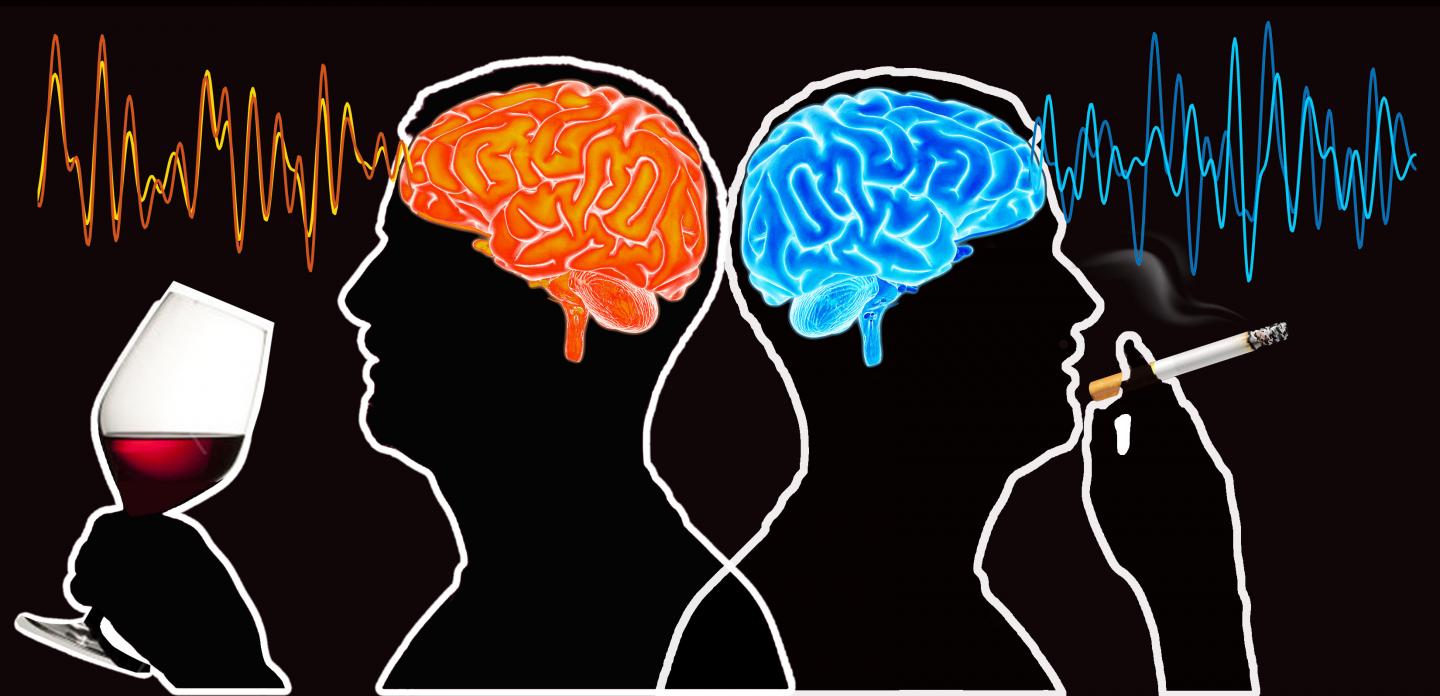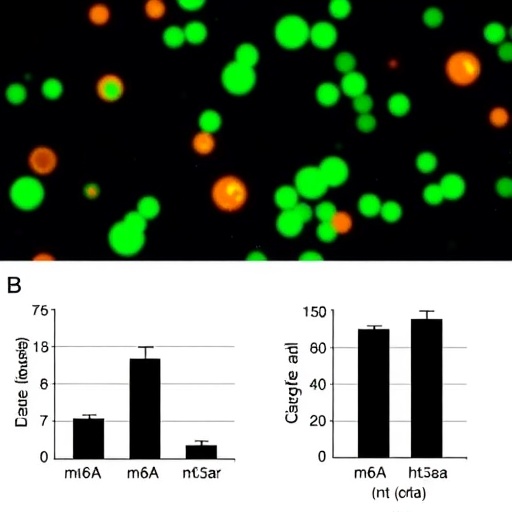
Credit: University of Warwick
- Around 3 billion people worldwide currently drink or smoke – new research could help in both the prevention and treatment of alcohol and nicotine substance abuse.
- In new research the areas of the brain that are different in those who smoke and those who drink have been identified: the tendency to drink alcohol is associated with increased connectivity of brain networks associated with reward processing; and the tendency to smoke is associated with low connectivity of systems that respond to not receiving rewards.
- These differential tendencies to alcohol and nicotine consumption can even be detected in young people before much drinking or smoking has started, thanks to new research led by the University of Warwick.
Academics at the University of Warwick have found that low functional connectivity of the lateral orbitofrontal cortex that is associated with the tendency to smoke is associated with increased impulsiveness – which may contribute to the tendency to smoke. The high connectivity of the reward-related medial orbitofrontal cortex in drinkers may increase the tendency to be attracted to the reward of alcohol consumption.
A new study by Professor Jianfeng Feng, Professor Edmund Rolls from the Department of Computer Science at the University of Warwick, in collaboration with Dr. Wei Cheng from Fudan University, China, examined the neural mechanisms underlying two key types of substance use behavior, smoking and drinking.
In 2000 participants they found that smokers had low functional connectivity in general, and especially in the lateral orbitofrontal cortex, a region of the brain associated with impulsive behavior. This suggests that people who smoke may do so to increase their overall brain connectivity with the stimulating effect of nicotine; and that being impulsive may be a factor leading to smoking.
Drinkers of alcohol had high overall brain connectivity, especially in the medial orbitofrontal cortex, a region implicated in reward. It is suggested that the high connectivity of this reward-related brain region may be a factor in attracting some individuals to alcohol.
Importantly the extent of these functional connectivity changes in the brains of drinkers and smokers correlated with the amount of alcohol and nicotine being consumed. Critically they were even detectable in individuals smoking only a few cigarettes or drinking one unit of alcohol every day.
Another key discovery is that it was possible to relate the connectivity at age 14 to who would smoke or drink at age 19. This opens up the issue of causality in addiction.
Professor Edmund Rolls, from the University of Warwick’s Department of Computer Science, comments: “These discoveries help to show that there are different neural bases of different types of addiction, and that the orbitofrontal cortex, a key brain region in emotion, is implicated in these two types of addiction.”
Professor Jianfeng Feng, from the University of Warwick’s Department of Computer Science comments: “These findings could have important public health implications, as both drinking and smoking affect a large population worldwide. According to a WHO investigation, there are over 1.1 billion people who smoke tobacco in the world, and more than 7 million people die each year due to the use of tobacco. As well as 2.3 billion people worldwide who are currently drinkers, with more than a quarter of all 15-19 year old teenagers drinking. More than 3 million people die as a result of the harmful use of alcohol each year.
“These are key discoveries that advance our understanding of the neurological bases of smoking and drinking and also provide new evidence on the different neurological mechanisms that are related to these two types of human addictive behavior, smoking and drinking, and these advances have implications for prevention and treatment of these two substance use.”
###
The paper ‘Decreased brain connectivity in smoking contrasts with increased connectivity in drinking.’ was published today, 8th January 2019 in the journal eLife.
JANUARY 8 2019
NOTES TO EDITORS
Paper available to view at: https:/
High-res images available at: https:/
https:/
https:/
For further information please contact:
Alice Scott
Media Relations Manager – Science, University of Warwick
Tel: 02476 574 255 or 07920 531 221
E-mail: [email protected]
Media Contact
Alice Scott
[email protected]
44-024-765-74255
Original Source
https:/
Related Journal Article
http://dx.




